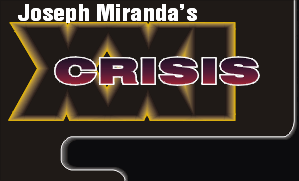


www.umahexagon.com |
|
| PROTOTYPE VERSION
A cardboard version of the CRISIS XXI computer simulation was first created as a "living design document" and test bed for the computer simulation. However, the CRISIS XXI cardboard version is already a sophisticated and useful tool, depicting a wide variety of situations - including domestic attacks in the USA. The provided scenario is "Kosovo Crisis" - depicting a highly dynamic situation. Kosovo demonstrates critical aspects of asymmetrical warfare: a "conventional" NATO force faces a wide range of military, paramilitary and underground forces in a politically volatile situation. Terrorism is presented as a threat which potentially involves anything from low-level efforts to the use of WMD. The tool is designed to be used by two or more participants, representing major and minor national powers (e.g., the United States, Serbia), irregular forces such as the Kosovo Liberation Army, international agencies (the United Nations), and non-governmental organizations (Global Media), and potential "wild cards" such as the possibility of international terrorists like Osama bin Laden becoming involved. Participants utilize a wide range of conventional and unconventional operations to gain their objectives, from destroying enemy forces to attaining political objectives. Strategies and operations are simulated which quantify complex non-material training and doctrinal factors into cohesive option "packages" thus providing a means with which to insert such variables into the simulation. Participants select Strategy options to determine their overall actions. Strategies represent a wide range of national policies, from accommodation, up through various force options, to full-scale conflict. These represent real-world doctrinal and political considerations which determine operational level actions. Within each turn, the players will execute Operations in attempts to locate, demoralize, erode the support of enemy Factions, bolster the presence and effectiveness of friendly Factions, and evaluate the impact of operations on the overall political situation. Participants select from an array of Operations Cards, which quantify the military versus political tradeoffs between varying levels of violent and non-violent actions. The basic unit of play in CRISIS XXI is the Front, an organization or agency. Each Front consists of the following:
The factors simulated are based on a wide range of political, cultural, personality and other issues. Once surface political issues are removed, analysis demonstrates that terrorist (and terrorism counteraction) forces are motivated by a few remarkably similar factors. The Cognitive and Behavioral models are designed to be expandable, allowing agencies to input their own data and evaluations of Fronts. On the Terrorism Counteraction side, the game provides models of the following:
These stages in the development of terrorist organizations and operations are based on an evaluation of past and current activities and include branching subroutines which are triggered by various critical events that reconstitute forces on all sides. Each player's objective in CRISIS XXI is to attain the scenario's Victory Conditions, which will be the gaining of military, economic and/or political objectives. |